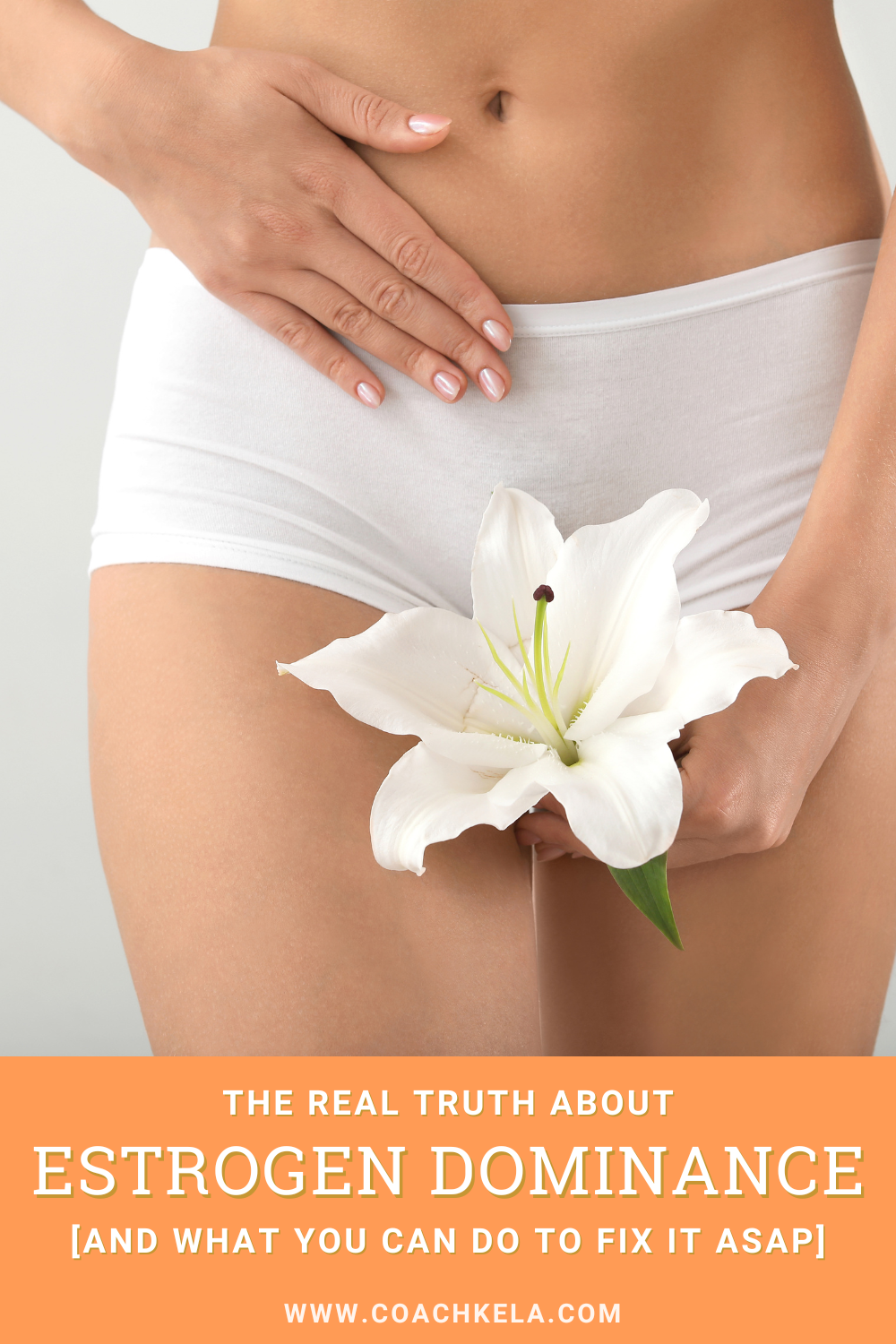Written by Guest Blogger: Kasey Goins, a former physician assistant turned functional nutritionist
Estrogen dominance is increasingly common in our society today, and one of the most common conditions I see in my practice. With the invention of processed seed oils, endocrine disruptors, and the level of stress we all experience, it’s no wonder why so many women struggle with their periods.
Estrogen and progesterone are 2 sex hormones that must be kept in balance with each other if you want healthy,regular, virtually symptom-free periods.
There are 3 main types of estrogen, with estradiol (E2) being the most common type of estrogen in premenopausal women. Estrogen is critical for healthy periods and fertility.. It’s responsible for helping your body develop follicles (1 of which will be released as the dominant follicle in ovulation), triggers the surge of luteinizing hormone (LH) to release the egg in ovulation, thickens the endometrial lining of the uterus for implantation, and plays a role in bone health.
Estrogen fluctuates throughout your menstrual cycle, being lowest when you’re menstruating, and highest near ovulation. After ovulation, estrogen levels drop, then bump up slightly in the luteal phase, about a week before your period starts.

The problem isn’t estrogen itself… but a disproportionate amount of estrogen in relationship to progesterone.
Excess estrogen can create symptoms of estrogen dominance the same way that a lack of progesterone and normal amounts of estrogen can create symptoms.
Symptoms of estrogen dominance include:
- Heavy periods
- Irregular periods
- Periods lasting longer than 7 days
- Clotty periods
- Breast swelling + pain
- Period cramps
- Fibrocystic breast changes
- PMS symptoms
- Pre-period bloating
- Mood swings
- Hair loss…to name a few.
I often will see estrogen dominance implicated in conditions like PCOS and endometriosis as well.
The reason estrogen dominance is so prevalent now is mainly due to our Standard American lifestyle & diet.
Xenoestrogens like chemicals, household cleaners, conventional beauty products and makeup, conventional skincare, and even scented candles disrupt the way hormones behave in your body, creating an environment suitable for excess estrogen.
Phytoestrogens are found in foods and include things like beans, grains, nuts and seeds. A diet high in these types of foods can also disrupt normal hormonal functioning.
On top of that, a diet high in refined sugars, polyunsaturated fats (seed oils), and enriched flours drive estrogen levels up in the body. Add a lack of sleep, lack of sun exposure, too much stress and blue light – and we have a perfect storm.
So what can you do about it?
- Eat as many whole foods as possible. Focus on nutrient-dense foods like animal proteins, grass fed beef liver, fruits, root vegetables, high quality dairy products, and saturated fats from animal products.
- Reduce your exposure to xenoestrogens. A good rule of thumb is to swap out a conventional product for a non-toxic one when you run out (ie when you run out of foundation, replace it with a non-toxic version; the same goes for your household cleaners).
- Go to bed before 10:30 pm and get at least 7-9 hours of sleep at night. This is your body’s time to rest and repair, and proper sleep is needed to keep stress hormone levels at bay.
- Eat enough! For many women, this is at least 1800 calories per day, usually more. We’ve been conditioned to under-nourish and under-fuel our bodies, but the truth is that your body needs fuel and needs high-quality nutrients for hormones to function properly.
- Manage your stress. When you’re stressed, cortisol levels rise. As cortisol rises, so does estrogen. The more you’re running on stress hormones like cortisol, the more your sex hormones, menstrual cycle, and fertility will be affected. Make time for yourself, take walks, get outside in the sun, start a journaling or meditation practice.
Estrogen dominance is common, but is absolutely solvable with the right strategies and tools and a root cause approach.
Guest Blogger,
Kasey Goins
FREE: Estrogen Detox Guide
Kasey is a former physician assistant turned functional nutritionist and aims to help women target the root causes of hormonal imbalances through the power of nutrition.
P.S. Catch Kasey’s interview in this week’s episode of The Hormone P.U.Z.Z.L.E Podcast – Estrogen Dominance and Your Fertility/Hormones. You can also find the episode on this podcast page as well as Spotify, and Stitcher. Don’t forget to subscribe, follow, and write us a review on Apple Podcast (if you LOVE it).



